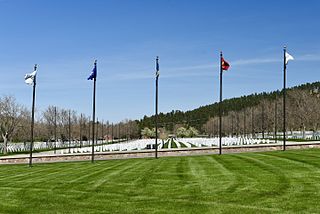
Meade County is a county in the U.S. state of South Dakota. As of the 2020 census, the population was 29,852. Its county seat is Sturgis. The county was created in 1889 and named for Fort Meade, which was garrisoned as a United States military post in the area in 1878 and itself named for General George Meade.

Sturgis is a city in Meade County, South Dakota, United States. The population was 7,020 as of the 2020 census. It is the county seat of Meade County and is named after Samuel D. Sturgis, a Union general during the Civil War.

Calverton National Cemetery is a United States National Cemetery in the Town of Riverhead in Suffolk County on eastern Long Island in New York. The cemetery's street address is in Calverton but the property is in the adjacent hamlet of Wading River. It encompasses 1,045 acres (423 ha) and as of the end of 2008 had 212,000 interments.
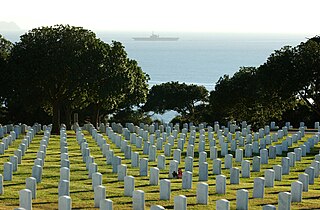
Fort Rosecrans National Cemetery is a federal military cemetery in the city of San Diego, California. It is located on the grounds of the former Army coastal artillery station Fort Rosecrans and is administered by the United States Department of Veterans Affairs. The cemetery is located approximately 10 miles (16 km) west of Downtown San Diego, overlooking San Diego Bay and the city from one side, and the Pacific Ocean on the other. Fort Rosecrans is named after William Starke Rosecrans, a Union general in the American Civil War. The cemetery was registered as California Historical Landmark #55 on December 6, 1932. The cemetery is spread out over 77.5 acres (31.4 ha) located on both sides of Catalina Blvd.

Riverside National Cemetery (RNC) is a cemetery located in Riverside, California, dedicated to the interment of United States military personnel. The cemetery covers 1,250 acres (510 ha), making it the largest cemetery managed by the National Cemetery Administration. It has been the most active cemetery in the system since 2000, based on the number of interments.
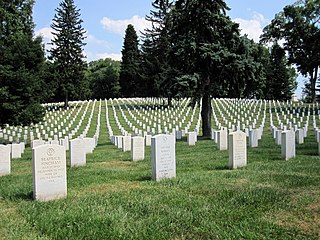
Culpeper National Cemetery is a United States National Cemetery located in the town of Culpeper, in Culpeper County, Virginia. Administered by the United States Department of Veterans Affairs, it encompasses 29.6 acres (120,000 m2) of land, and as 2021, had over 14,000 interments.
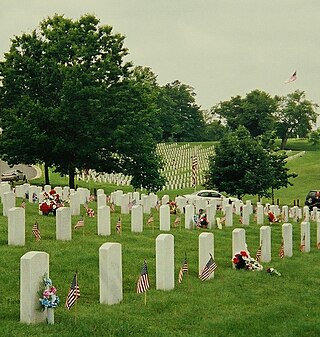
Camp Nelson National Cemetery is a United States National Cemetery located in southern Jessamine County, Kentucky. It was originally a graveyard associated with the U.S. Army's Camp Nelson, which was active during the U.S. Civil War and its aftermath. The camp was named for Major General William "Bull" Nelson, commander of the Civil War Army of Kentucky, who was murdered by a fellow officer in 1862.

Cypress Hills National Cemetery is a 18.2-acre (7.4 ha) cemetery located in the Cypress Hills neighborhood of Brooklyn, New York City. It is the only United States National Cemetery in New York City and has more than 21,100 interments of veterans and civilians.

Fort Meade National Cemetery is a United States National Cemetery located near the city of Sturgis in Meade County, South Dakota. Administered by the United States Department of Veterans Affairs, it encompasses 1.9 acres (0.77 ha). It is maintained by Black Hills National Cemetery.
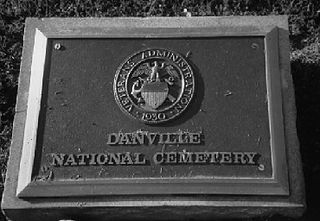
Danville National Cemetery is a United States National Cemetery located in the city of Danville, in Boyle County, Kentucky. Administered by the United States Department of Veterans Affairs, it has 394 interments and is currently closed to new interments.
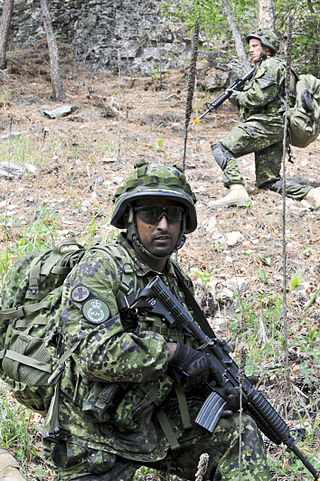
Camp Rapid is a South Dakota Army National Guard installation located in Westside, Rapid City, South Dakota just inside the edge of the Black Hills. Although the South Dakota state capital is Pierre, South Dakota, the state's Adjutant General has his office and headquarters in Camp Rapid.

The Black Hills is an isolated mountain range rising from the Great Plains of North America in western South Dakota and extending into Wyoming, United States. Black Elk Peak, which rises to 7,244 feet (2,208 m), is the range's highest summit. The Black Hills encompass the Black Hills National Forest. The name of the hills in Lakota is Pahá Sápa. The Black Hills are considered a holy site. The hills are so called because of their dark appearance from a distance, as they are covered in evergreen trees.
Jacksonville National Cemetery is a United States National Cemetery located within the city of Jacksonville, Florida, in the city's Northside area. It encompasses 526 acres (213 ha), and began interments on January 7, 2009.

Alabama National Cemetery is a United States National Cemetery located in Montevallo, Alabama, about 35 miles south of Birmingham, Alabama. It encompasses 479 acres (194 ha), will serve veterans' needs for at least the next 50 years, and interments began on June 25, 2009.
Sarasota National Cemetery is a 295-acre (119 ha) United States National Cemetery located in Sarasota County, Florida. Administered by the United States Department of Veterans Affairs, it is the sixth national cemetery developed in Florida.
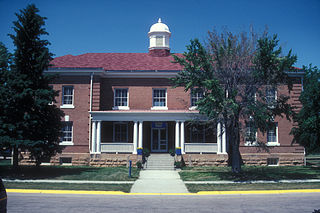
Fort Meade, originally known as Camp Sturgis and later Camp Ruhlen, is a former United States Army post located just east of Sturgis, South Dakota, United States. The fort was active from 1878 to 1944; the cantonment is currently home to a Veterans Health Administration hospital and South Dakota Army National Guard training facilities. Much of the former reservation is now managed by the Bureau of Land Management as the Fort Meade Recreation Area. It is also home of Fort Meade National Cemetery. Fort Meade was established in 1878 to protect illegal white settlements on the Great Sioux Reservation in the northern Black Hills, especially the nearby gold mining area around Deadwood. Several stage and freighting routes passed through Fort Meade en route to Deadwood.

Fort Jackson National Cemetery is a United States National Cemetery located northeast of Columbia, South Carolina. It encompasses 585 acres (237 ha) acquired from Fort Jackson, a United States Army Basic Training facility, and was dedicated on October 26, 2008.
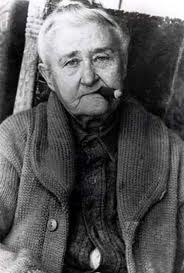
Alice Ivers Duffield Tubbs Huckert, better known as Poker Alice, Poker Alice Ivers or Poker Alice Tubbs, was an English poker and faro player in the American West.

Yellowstone National Cemetery is a United States National Cemetery located one mile north of Laurel, Yellowstone County, Montana, at 55 Buffalo Trail Road, administered by the US Department of Veterans Affairs, National Cemetery Administration. The 10.5 acres (4.2 ha) cemetery began as a satellite cemetery of Black Hills National Cemetery; Sturgis, South Dakota. On 18 May 2015 the Department of Veterans Affairs created five national areas of responsibility. Fort Logan National Cemetery, Denver, Colorado, in the newly formed Continental Division, assumed supervisory responsibility for Yellowstone National Cemetery. Yellowstone National Cemetery is the first of eight smaller national burial grounds the Department of Veterans Affairs began in its Rural Veterans Burial Initiative for largely rural states in America.

Miramar National Cemetery is a federal military cemetery in the city of San Diego, California. It is located in the north west corner of the Marine Corps Air Station Miramar on the grounds of old Camp Kearny (1917) and Camp Elliott (1942).



























